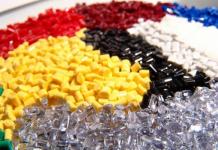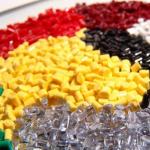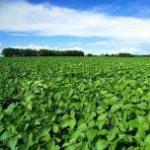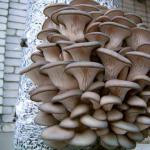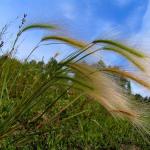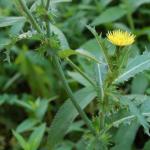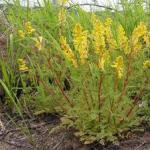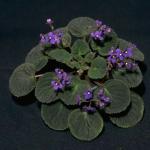In the greenhouse is a very interesting topic, which we have already talked about. But we had an idea to grow oyster mushrooms in the country. As far as this is possible and what is necessary for growing oyster mushrooms in the country, we will consider now.
Oyster mushrooms are an excellent and fast growing type of mushroom, which for many has become not only a product of their own production, but also an industrial crop that has firmly occupied a certain niche in the market. By and large, such mushrooms are inexpensive, and you won’t earn much by growing them in a dacha in small quantities, but you can always organize a small “bed” in a certain room and get a fresh mushroom every day for your own needs. Boiled, fried, stewed, pickled, mushrooms in a salad or fried - all this will cease to be a problem if you start growing in the country. Of course, the organization of a place for production and some start-up costs are ahead, but then there are no problems, and only fresh and fragrant mushrooms every day.
Growing oyster mushrooms in the country
The technology for growing oyster mushrooms involves a special algorithm that you must follow at first, but also in the future, do not forget about the main points. In principle, everything ingenious is simple, and in order to grow a decent crop, you will need to fulfill only the simplest requirements.
Selection and preparation of premises for oyster mushrooms
To grow mushrooms, we need to choose a room in the country, which is currently not in use. It is desirable to determine exactly the one that is not planned to be used in the near future. It can be a basement, a cellar, a special pit in an old garage, a newly equipped room specifically for a small business.
Having chosen the room, it is necessary to prepare it for operation, to carry out disinfection. It will be enough to treat all surfaces of the room well with a 4% lime solution. After treatment, the room should be hermetically sealed for a day or two. After, ventilate well until the smell is completely gone.

It is worth taking into account the fact that two rooms should be prepared in this way - prosprostnaya and vegetative.
Preparing the substrate for growing oyster mushrooms
Any of the materials presented can act as a substrate. These are sunflower husks, sawdust, corn cobs, straw of cereal plants.
We recommend the use of crushed straw or husks, as well as a mixture of these materials for the production of mushrooms. Initially, we will need pasteurization of straw, husks or their mixtures and the preparation itself. You can run it like this:
- Our mixture or separate material is poured for 20 minutes with warm water, temperature not exceeding +25°C. All this time, the mixture can be stirred, as if rinsing it;
- After that, it is necessary to drain the dirty water from the pasteurization tank, squeeze the mixture and fill it with already hot water, at + 70 + 80 ° C, set oppression on top for 5-7 hours, and then just drain the water and squeeze the straw with the husk;
- Now, in order to increase the nutritional value of the substrate, and hence the fruit formation in it, we need to add additional components. We choose 0.5% superphosphate, 0.5% urea, 2% gypsum and 2% ground limestone;
- During the application of additives, their humidity should be kept at 75% so that the additives simply do not wash out with water. Also, additives can be pasteurized separately and only then added to the substrate.

Preparing bags for the production of oyster mushrooms
In order to grow high-quality mushrooms, we need to plant them not only in a high-quality substrate and withstand agricultural technology, but also prepare the right container for oyster mushrooms, that is, bags.
There is nothing complicated here, and any plastic bags can be used to grow oyster mushrooms in the country. For example, bags of 40x60 cm or bags of 50x100 cm. Next, we will need to make holes through which the mycelium will “feed” us the fruits. Holes in bags for oyster mushrooms are made 15-20 cm apart, in a chaotic manner. We need holes with a diameter of 1.5-2 cm.


We place the substrate in bags and populate the mycelium
The finished substrate is poured into a bag. The first layer is 15 cm, then a layer, the next layer is 15-20 cm, and again a layer of mycelium. This must be done until the bag is 2/3 filled. The main thing is to lay the substrate and mycelium evenly, and spend about 5% of the mycelium of the total weight of the bag on each bag. Note also that the average moisture content of straw with husks should be 75%.
After stuffing the bags, they are tied up and transferred to a prepared room, where they are installed on top of each other in rows of 2-3 bags, or simply hung up.
Oyster mushroom cultivation, mushroom care
The temperature of the growing room should be strictly regulated and remain at the level of about +22+24°C, the temperature of the substrate in bags should not exceed +28°C. It is necessary to monitor the humidity in the room - 90-95%. Interestingly, for germination and "complete infection" of the substrate with the fungus, no lighting is required.
After the substrate is overgrown with mycelium, the bags are transferred to the second room - the vegetable room, where fruiting will occur.
The bags are placed over the area and on top of each other, but not tightly, so that you can pass between them, and there is also good ventilation. For example, you can install bags of 3-4 for each square meter of the room. But there is another way that will save space, or rather, make it more useful. To do this, you will need to install special stakes - the bases for the bags with the substrate, on which you can put on several bags at once. Also, bags can be simply hung from the ceiling.

Fruiting oyster mushroom
Fruiting of oyster mushrooms occurs only with strict observance of agricultural technology. It is necessary to maintain the temperature at + 12 + 18 ° C, humidity at 90-95%. Soon, the so-called mushroom plugs should appear in the holes of the bags - the embryos of oyster mushrooms, which form the fruiting bodies of mushrooms in the future.
The required humidity must be maintained at all times. This can be done using special installations, or independently, from standard sprayers, or you can install several containers filled with water indoors.


If you are irrigating indoor air, you must avoid getting water on the bags and even small puddles on the floor.
Now we need lighting, which should work exactly half the day. Don't worry, there won't be any serious energy costs, since only 100-180 lux is enough, approximately, as in cloudy weather. Standard fluorescent lamps can be used to illuminate the growing room.
Do not forget that oyster mushroom prefers ventilated rooms with fresh air, which means that we need high-quality ventilation. To comply with the requirements, it will be necessary to provide the growing room with special equipment (if the cultivation is large-scale and for business), or with conventional fans, if the room is small. It will be enough to open windows and doors, and turn on the fans 5-7 times a day.
Remember, the concentration of carbon dioxide in the room should not exceed 1%. In addition, be very careful about your own health, because mushroom spores during fruiting can cause a cough and even a serious allergic reaction. Take care of yourself and use special protection - masks, respirators.
Oyster mushrooms - a simple and profitable business (video)
How is oyster mushroom harvested?
The oyster mushroom stretches closer to the holes that we made, but not always the mushrooms fall exactly into them. Therefore, it is necessary to help the mushrooms get out - cut holes in the bags, making them a little larger. After the mushrooms make their way out, they need about 6-8 days to grow to the cut.
Mushrooms should be cut carefully, without leaving particles of oyster mushroom fruiting bodies on the bags. You can use mushrooms immediately, and if you need to store them, then you will need to use special containers or plastic packaging.
After cutting the mushrooms, the next crop will appear in two weeks, and the next in another two. Let's put it simply - there are three waves of harvest, which make up the total harvest in the corresponding percentage - 70%, 20%, 10%.
The value of the substrate in terms of the weight of the finished product is approximately the following - from 10 kg of the substrate for the entire rotation, about 3 kg of oyster mushrooms are obtained.

Growing oyster mushrooms in the garden
Growing mushrooms in the basement is always interesting, but today we want to present you with another way so that you can easily grow oyster mushrooms on stumps or logs. What is good, when using this method, you will not need special equipment for growing oyster mushrooms. Also, it will not be necessary to use the technology of growing oyster mushrooms very strictly, because oyster mushrooms grow very well in the country.

As you can see, such a simple method gives us the opportunity to grow oyster mushrooms in the country with our own hands.
The benefits of growing oyster mushrooms in a summer cottage
- It is possible not only to grow in the warm period, but also to grow oyster mushrooms in winter, in basements, cellars or other specially equipped rooms.
- Low start-up costs, stable harvest.
- Always fresh and organic product.
- A stable increase in yield at will, and, accordingly, a gradual transfer of a hobby into a business.

How to grow oyster mushrooms on stumps (video)
Oyster mushrooms, cultivation and care, forcing and harvesting technologies - now these phrases will not scare you, but only please you with the memories that you managed to start such a pleasant event, as well as get an excellent harvest of mushrooms and bring it to a constant level .
This method differs in the composition of the substrate used and the possibility of obtaining mushrooms indoors (greenhouse, lighted basement) under controlled conditions. It has a shorter cycle (2–2.5 months) and, in our opinion, is suitable for subsidiary plots, household and garden plots.
The intensive method of growing oyster mushrooms, proposed in Hungary, has been significantly improved by our researchers. They found that oyster mushrooms and similar Florida oyster mushrooms, recommended for intensive cultivation, grow well on various plant materials: straw, sunflower husks, cotton linters, corn cobs and their stems, reeds, chaff, etc. (in nature oyster mushroom does not occur on these substrates due to competition with mold fungi, which are ahead of it in development and even suppress it).
There are two methods of intensive cultivation of oyster mushrooms - sterile and non-sterile.
Sterile way(the first industrial method of its cultivation) consists in the fact that the humidified nutrient medium is placed in an autoclave, sterilized, and then the mycelium is introduced into the substrate. At the same time, competitive microorganisms die, and the oyster mushroom mycelium develops freely. This method gives good results, but is unacceptable for part-time farming: it requires compliance with sterile conditions during the entire cultivation period or the introduction of a so-called microbiological additive into the sterilized substrate (consisting of a complex of bacteria that prevent the development of mold fungi, but not oyster mushrooms). Such a microbiological additive is not yet produced in our country and is patented only in Hungary and France.
In the late 1920s was developed non-sterile way growing oyster mushrooms, in which only pasteurization (steaming) of the substrate is necessary, and all other processes take place under non-sterile conditions. With this method, the introduction of a bacterial additive is not required, but it must be used with the obligatory observance of sanitary conditions that prevent molding of the substrate, the introduction of mold fungi and their development.
The non-sterile method is quite accessible to amateur mushroom growers, and there is already experience in its use. With a certain caution, it can be tested at small mushroom growing enterprises. We will dwell on this in more detail. (Commercial or industrial cultivation of oyster mushrooms, based on a non-sterile method, involves a number of complex technological methods and requires special equipment and training of technologists).
It should be noted that the non-sterile method still does not give a 100% guarantee of obtaining a good, stable crop: there is always a threat of substrate molding. Therefore, it is better for amateur mushroom growers to grow oyster mushrooms on a small scale, then it is easier to carry out preventive measures.
As a substrate for growing oyster mushrooms, you can use agricultural waste: cereal straw (wheat, rye, barley, oats, millet), sunflower seed husks, corn stalks and cobs, chaff, sawdust, shavings, etc.
It is necessary to ensure that these wastes are not affected by mold, otherwise they will become a source of infection.
Humidification and mixing of the substrate for growing oyster mushrooms in an intensive way.
The wastes listed above can be mixed in different proportions, which makes it possible for amateur mushroom growers, on the one hand, to experiment and, on the other hand, to rationally use the waste of their subsidiary plots.
The substrate is crushed to the size of large sawdust (you can use a straw cutter). Then 2% (by weight) of ground limestone, 2% gypsum, 0.5% urea, 0.5% superphosphate and water are added to it (up to a moisture content of 75%). To accelerate fruiting and increase the yield, beer grains or bran are additionally added. All these additives should not exceed 10% of the weight of the substrate.
After that, the substrate is pasteurized. Pasteurization is carried out by keeping it for 2-3 hours at a temperature of 80-90 ° C in containers suitable for drying, with stirring. You can also steam the substrate in a small room, maintaining the temperature in it up to 55-60 ° C for 12 hours.
Amateur mushroom growers who grow oyster mushrooms in small quantities can process the substrate by pouring boiling water over it in containers and keeping it covered for 2-4 hours.
Then the water is drained, the substrate is dried to the desired (70–75%) moisture content, and the mineral additives listed above are added.
Another way to pasteurize the substrate is to fill it with bags (mesh, plastic or burlap) and place them in containers where steam or hot (80-90 ° C) water is supplied. Processing time - 6-10 hours.
Essential for all methods is the heat treatment of the substrate to eliminate competing moulds. In general, there are different options for preparing the substrate for growing oyster mushrooms in this way.
After heat treatment, the pasteurized substrate should be gradually cooled and then transferred to the planting site. For growing oyster mushrooms, the substrate can be placed in plastic bags, boxes, flowerpots and other containers, the sizes of which can be varied; the optimal dimensions of bags or boxes are 40 x 40 x 20 cm. The amount of substrate should be such that it does not dry out too quickly - 5–15 kg. The substrate is slightly compacted. It is very important to keep it clean when placed in containers for growing mushrooms.
Planting of oyster mushroom mycelium is carried out after cooling the substrate to 25–28 °C. The mycelium is introduced, evenly mixing it with the substrate, to a depth of 10–15 cm at the rate of 5–7% of the weight of the substrate: with a lower content of mycelium, the overgrowth of the substrate is delayed and there is a danger of the spread of competing molds.

You can add grain mycelium to the pasteurized chilled substrate before filling the growing containers with it. In this case, the pasteurized substrate is evenly mixed with a sterile mycelium (the same 5–7% of the mycelium from the weight of the substrate), and then the mixture is placed in containers for growing mushrooms. In this case, a faster and more uniform overgrowth of the substrate is ensured. With this method of introducing the mycelium, it is especially important to maintain cleanliness in the rooms where this procedure is performed.
Oyster mushroom mycelium grows well and develops at a temperature of 20–25 °C and a relative humidity of 90%. Light is not needed at this time. After 3-5 days, the surface of the substrate should be covered with a whitish layer of mycelium. After 8–10 days, with strict observance of the technology, the entire substrate will first acquire a light brown color, and then intertwine with white hyphae of the mycelium, which will indicate the beginning of its maturation.

With the growth of mycelium, it is necessary to measure the temperature in the thickness of the substrate 1-2 times a day. When it rises to 28 ° C or more, the room should be very well ventilated.
By the end of the mycelium maturation period, which lasts approximately 20–30 days, the substrate intertwined with mycelium turns into a dense homogeneous block. These blocks in plastic bags or other containers are transferred to the so-called growing room, where the temperature is maintained at 12–15 ° C and light is supplied. You can leave the oyster mushroom culture in the same room, if it is possible to provide a decrease in temperature and access to light. Oyster mushrooms bear fruit better when the blocks are vertical, so they are usually stacked in stacks 80–100 cm high and 40–60 cm wide (you must first remove the blocks from plastic bags). Between blocks in stacks, a free space of 90–100 cm wide is left for ease of care and harvesting. The method of laying blocks depends on the room.

Placement of blocks for growing oyster mushrooms on racks with vertical suspension.
Blocks from plastic bags may not be removed, but then, in order for mushrooms to form on all sides of the block, holes with a diameter of 1–2 cm or make vertical or cross-shaped cuts in the film to exit the formed fruiting bodies. Some mushroom growers mount elongated blocks in plastic bags vertically on metal rods or hang them in rows. In boxes and flowerpots, mushrooms appear on the upper, open surface of the substrate. Boxes can also be installed on the end, so that the mushrooms are formed, as it were, on a vertical wall.
To stimulate fruit formation during this period, it is possible to withstand the substrate, permeated with oyster mushroom mycelium, for 2–3 days at a temperature of 3–5 °C. This procedure is best done before transferring the substrate overgrown with mycelium to the grow room. However, this approach is optional.
Humidity in the room during fruiting should be maintained within 80-100%. To do this, at a temperature of 12-16 ° C, 1-2 waterings per day of the floor and partially the walls of the room are sufficient. If it turns out that the block taken out of the plastic bag has dried up a little from the surface, then it can be slightly moistened with a watering can or hose with a sprayer.
In recent years, the technology of growing oyster mushrooms has become widespread, when the blocks are not removed from the bags and the premises are practically not irrigated, since the substrate contains enough moisture for the formation of mushrooms. Moisture is well retained under the film. In this case, watering indoors is carried out only if the air temperature rises above 18–20 ° C to reduce it.
During fruiting, an excess amount of carbon dioxide accumulates in the premises, which must be removed by ventilation.
During the maturation of the mycelium for the first 5–6 days, lighting in the nursery is not necessary: the main processes occur in the dark in the thickness of the substrate. However, with the appearance of the rudiments of fruiting bodies, it is necessary to create optimal illumination (70–100 lux for 6–10 hours a day).
In a small dark room (basement, barn) use a fluorescent lamp or ordinary sunlight, but shaded. Light affects the structure of the fruit bodies of oyster mushrooms: the legs of the mushrooms are shortened; the caps, which were whitish at first, begin to darken and become brown-gray; as the caps mature, they quickly increase in size and brighten again.
Mushrooms should be plucked (better cut off) with legs to the base so that the blocks do not start to rot. In 2-3 weeks after the first harvest, the second wave of mushrooms will come. The care of the blocks at this time remains the same, and the lighting system is turned on when the rudiments of fruiting bodies are formed.
Practice shows that up to 75% of the crop is harvested in the first wave, and in total, under optimal conditions and a good substrate, in two waves the mushroom yield will be approximately 25–30% of the weight of the substrate. This is cost-effective, especially since oyster mushrooms are well stored, transportable and do not deteriorate at low temperatures.
After the second wave, it is advisable to replace the blocks with new ones overgrown with fresh mycelium. The hatched blocks can be used as roughage for livestock and feed additive for poultry.
Few pests and pathogens of oyster mushrooms are known. Of the pests, mushroom flies are common, as well as ticks and mosquitoes. Diseases, more often of bacterial origin, appear after the defeat of fungi by pests.
An affordable way to disinfect a room where mushrooms are grown is spraying with a 2–4% solution of bleach or formalin. After that, the room must be closed for two days, and then ventilated for 1-2 days. This treatment must be carried out before each use.
Mushroom cultivation: oyster mushroom, champignon, shiitake
Previous page -
How is oyster mushroom grown? Getting mushrooms at home seems like a strange idea until you try these wonderful fresh mushrooms. The technology of growing oyster mushrooms allows you to master it for mass production, your own use or for sale. Before you decide to grow mushrooms, you should take care of preparing the premises for planting, buying oyster mushroom mycelium and substrate.
Substrate preparation
How to grow a good crop of oyster mushrooms at home? It all starts with the preparation of mycelium and substrate, nutrient medium. A good basis for the substrate in the case of growing oyster mushrooms is straw, corn stalk, seed husks, larch shavings. The main condition when choosing a material is that it must be of high quality, dry, and not spread mold. First, the substrate is treated with steam or boiling water, bacteria are killed and softened. Then they are allowed to dry: waterlogging of the oyster mushroom mycelium with an excessively wet environment should not be allowed. Proper moisture allows the material to be springy, but not to let out drops of water. It is best to grind the substrate for oyster mushrooms to small particles, so it absorbs moisture better.

Breeding oyster mushrooms requires careful attention to the primary material, the mycelium must be bought from trusted sources, it is advisable to take small batches for testing. The packaging should contain information about the variety and strain of the fungus. Overheated material is not suitable for growing crops, then oyster mushrooms will not grow. To the touch, the packaging with mycelium should not be hotter than 20 °. It should not show green or

The cultivation of mycelium begins with its cooling to 3 °, you can put it in the refrigerator, but not in the freezer. It is advisable not to let the bags lie for a long time, but immediately plant them after cooling. Mash the material and make sure that the temperature of the substrate is appropriate, do not shock the culture with a change in cold and heat. Observe sterile conditions, the place for planting the mycelium and the place where future mushrooms will grow should be in different parts of the room. This is necessary to prevent infection. Be sure to work only with gloves at all stages, changing them with each new procedure.
The technology of growing mushrooms involves several types. With the extensive method, the product is grown in a natural environment, the costs are minimal. The intensive method implies a lot of trouble, since good artificial conditions must be created. Growing oyster mushrooms is possible with the observance of the features of both methods, however, each of them has its drawbacks. Natural cultivation requires seasonal suitable conditions and a plot of land.
In the case of artificial production, the disadvantage is the cost of the event due to the need to create appropriate conditions for climate, humidity, and illumination. Another problem is oyster mushroom seeds, as they are often of poor quality or spoiled. You need to buy them on the recommendation or in trusted places.

Growing oyster mushrooms at home consists of a number of processes. First of all, the material for the substrate is processed, scalded with boiling water or steam, drained under pressure if necessary. The place where the substrate will be stored is treated to sterility, as are all work surfaces with materials. After that, the mycelium is gently transferred to the nutrient mixture. This is the most crucial moment, during which no extra particles, such as mold or dirt, should get into the substrate. It is desirable that the room for growing oyster mushrooms be small and without ventilation. The culture should grow in a dark, tightly closed place without active air circulation.
Mycelium should be mixed with the substrate in a proportion of approximately 4% of the material and 96% of the nutrient medium. The mixture is prepared under sterile conditions and packed in plastic bags. For industrial conditions, a large container of 15-20 kg is suitable; for home production, medium-sized bags are required so that they better keep a uniform temperature. On the bags you need to make small cuts, it is through them that oyster mushrooms grow. Depending on the type of cuts, mushrooms of the desired shape can be obtained.

How to grow the finished mixture? It is necessary to lay out the bags in such a way that air flows to them from all sides, and the temperature can be regulated: it should not be higher than 25 °. It is good to grow oyster mushrooms when the temperature inside each bag is kept at around 27-28 °. The germs die from heatstroke. Throughout the process, active ventilation is not carried out at the place where mushrooms are grown, so that the air is saturated with moisture and carbon dioxide.
In order for the process to be successful and the oyster mushrooms to grow, every day you need to wipe all surfaces with a damp cloth with bleach.
These simple rules must be observed if oyster mushrooms are grown on sawdust. The incubation period is approximately 22-24 days, then the most interesting long-awaited process begins - the growth of fungi. They do the same if oyster mushrooms are grown in a greenhouse - the principle is the same.
Growing oyster mushrooms as a business (video)
Fruiting
If the initial cultivation went well, the oyster mushrooms will begin to grow actively. Blocks with fruit bearers must be placed vertically so that they do not touch. The first batch of oyster mushrooms will ripen up to 2 months. During this time, you need to try to ensure the humidity of the air is up to 95%. You can't do without special humidifiers. At this stage, there are secrets on how to prepare the conditions for the desired color of the mushroom cap. The higher you raise the temperature, the lighter the hats will turn out. Many people have preferences for the color and taste of oyster mushrooms: this can be adjusted during cultivation.
Also, the color is affected by the level of illumination: in the sun they darken, acquire a pleasant brown-ocher look. Install a 5 W lamp light per 1 m². So that the mushrooms do not acquire a watery structure, do not fill them with water, it is advisable to irrigate the mycelium dry. During the growing process, watering is allowed, but the water should not be higher than 20 ° and it should be poured on mushrooms from top to bottom so that it flows down the hat. There are no recommendations for watering, everything is determined individually. The main thing is not to let the oyster mushroom get wet and ventilate the air in the room. These mushrooms do not like dampness and deteriorate from excessive moisture.

Yield depends on many factors. Water greatly affects the final product. In order to prevent orange goblet plates, it is necessary not to fill the mushrooms with liquid at all stages of cultivation. Cultivation of mushrooms in a residential area is dangerous to health, since a huge amount of spores are released during fruit ripening, they are powerful allergens. Even for a healthy person, this amount can be critical.
After the first series of harvesting, you should not relax. There are a few more in line, in a couple of weeks new mushrooms will grow with timely preparation of the material. After you have harvested, you need to cut off the remaining legs and shovel the mycelium. All parts affected by mold are carefully sorted and thrown away without a trace. A moldy substrate can be useful as an organic fertilizer.
Harvesting
If you did everything right, then your oyster mushrooms will bear fruit for another 5 or 6 months. The first series of harvesting will be the most fruitful. In the last months, special attention should be paid to ventilation, as intensive cultivation will attract insects, mushroom flies.

The process of growing mushrooms is incredibly laborious, but if you master the technology, you can make a whole business in the production of this product. For many people, the cost of growing will be disproportionate to the benefits, so you should think before you get involved in this business. Growing oyster mushrooms for themselves is chosen by those who really love this product in food and do not trust sellers. You never know what chemicals were used and under what conditions mushrooms were produced. And, of course, when we grow food with our own hands, it seems much tastier.
Growing oyster mushrooms (video)
Gallery: growing oyster mushrooms (15 photos)
Related posts:
No related entries found.
" Mushrooms
The technology for growing and breeding oyster mushrooms at home with your own hands is quite simple, even an amateur can handle it. However, before you get down to business and grow mushrooms, you should familiarize yourself with the existing methods and requirements for the environment in which mushrooms will develop normally. Where to start and how to make the process from scratch, we will tell you step by step, and even a beginner will easily breed and plant mushrooms.
You can organize a place for the cultivation of mushrooms in basements, cellars or specially designed rooms in a summer cottage. For the cultivation of oyster mushrooms, you need to create the following conditions:
- the ability to set and maintain the temperature regime within 10-20 degrees;
- equip the room ventilation system for the removal of carbon dioxide and lamps with fluorescent lamps;
- set humidity mode 70-90% .
Mushrooms, due to their properties, absorb elements of the environment, including toxins. Therefore, it is important that all surfaces in the basement are disinfected. free of mold and pests. Cleanliness must be maintained until the very end of the harvest.

The temperature regime in which oyster mushroom grows well is limited to marks from 20 to 28 degrees.
Ways to grow mushrooms at home
There are several ways to grow oyster mushrooms at home. Each method has advantages and disadvantages, so it is recommended to read with all the subtleties of technology to choose the most suitable option for you.
How to breed in bags with your own hands
The substrate can be purchased ready-made or prepared with your own hands. The best raw material for oyster mushrooms is considered barley or wheat straw. Will also fit:
- shavings of hardwood;
- buckwheat husk;
- sunflower husk;
- corn cobs and stalks.
Components to be used grind to 5-10 cm.

Those who are just starting to master the technology of growing mushrooms at home are advised to refrain from using sawdust. This method is complex and has special requirements.
Before using the substrate, disinfection material. To do this, it is subjected to heat treatment.
Step-by-step procedure for disinfecting the substrate:
- the selected crushed raw materials are poured into a metal tank or a capacious pan;
- fill the container with water (proportions 1: 2);
- bring the contents of the pan to a boil and cook for about 2-2.5 hours.
The finished base should be wet and soft, but you should not overdo it with water. The correct composition during the spin cycle releases a minimum amount of moisture.
In addition to the substrate, seed (mycelium) is placed in the bag. It is not worth buying much at once, it quickly deteriorates. If proper care is taken, then from 1 kg of raw materials you can get up to 3 kg of oyster mushrooms.
The base is laid in bags in layers, alternating a ball of substrate with seed. The bags are filled tightly, but without tamping. After a strong tie of the edges of the container, cruciform holes are cut with a blade on the surface of the polyethylene. You need to arrange them with an interval of 10 cm in a checkerboard pattern.

For 2 weeks, the bag is lowered into the basement for an incubation period at a temperature 19-23 degrees. Lighting is not required at this stage.
The main advantage of the method lies in the simplicity of the technology. However, poor fruiting or its complete absence is often observed. In such cases, you need to sort out the substrate, and check for the presence of mold in it.
Mushroom picking begins 1.5 months after planting. Two crops are taken from one bag.
Step-by-step breeding technology on stumps
There are two main ways to grow oyster mushrooms: intensive and extensive. In the first case, special premises with favorable conditions. The second method introduces mushroom cultivation technology open air. The timing of the harvest is completely dependent on weather conditions.
If there is no fall or cellar in the country, you should not be upset. You can grow oyster mushrooms directly on stumps or cuttings of hardwood (chestnut, ash, poplar, beech, etc.).
Sowing time starts spring when establishing positive temperatures. Cuttings are soaked for 1-2 days before use. With a fresh tree, this procedure is not performed.

On the stumps, holes are first made with a diameter 10 mm with recess for 5-6 cm. Seed material is placed in the holes and covered with moss or adhesive tape. Stick-shaped mycelium is enough to insert into the hole and close it with plasticine.
A place for growing mushrooms is selected in the shadow under dense canopy of trees. This is necessary to prevent the oyster mushrooms from drying out in the warm season.
When using logs, digging holes and laying wet sawdust on the bottom is provided. Next, soaked tree trimmings are inserted into the prepared recesses and buried with soil a third of the length (at least 15 cm). The interval between the stumps should be 35-50 cm.
Further care for mushroom beds is to water the soil around the blanks. The timing of the collection of oyster mushrooms often falls on Aug. Sept. Such a plantation will bring good growth up to 5 years with the most generous fruiting 2-3 years after planting.
On substrate briquettes
Substrate briquettes are polyethylene sleeve, tightly stuffed with filler. pre-applied on the surface of the film perforation round or other shape. Holes can be spaced evenly throughout the block, or cover only two sides.
In the first case, when fixing the briquettes, they should not be allowed to touch, in contrast to double-sided perforation, where the joint has no holes.
The most popular containers are:
- weight - 15 kg;
- length - 70 cm;
- diameter - 25 cm.
The density of the substrate in the sleeve, the level of humidity and the environment depends on the raw materials used and the method of its heat treatment.
There are many options for placing substrate briquettes. They can be hung 2-3 pieces per rope or hang each individually on the armature. The weight of the bags is quite heavy, which ensures stability when storing blocks. Each other. The result is a solid wall.

It is also allowed to place briquettes on the shelves in vertical or horizontal position. A rope stretched from the back of the shelves acts as insurance against falling or falling of the substrate. When growing mushrooms at home, the decision to place the bags is made based on the characteristics of the room.
Advantages of the method:
- convenient application;
- simple care;
- getting a quick harvest (after 1.5-2 months).
The disadvantage is the additional costs for the purchase of substrate briquettes.
On the shelves
Briquettes or bags of substrate and seed in the basement or cellar can be placed on racks if space permits. The shelves themselves should be wooden or rolled steel. Blocks are placed vertically or horizontally.
Racks are manufactured in various designs. Craftsmen independently develop drawings, providing for safety elements that prevent the bags from falling. One of the options is equipped with special pins on the shelves, on top of which blocks are placed. This increases their stability.
Mushroom sleeves can be installed in several tiers, but no more than three. In this case, the distance between the racks should be 70 cm, and between the mushroom bags - 15-40 cm.

When installing mushroom containers in 2 or 3 tiers, you must leave free space under the lower blocks of at least 30 cm to ensure normal air circulation.
This method of growing oyster mushrooms is characterized by convenient care and harvesting. However, not all summer cottages and cellars have enough space for shelving installations.
How to make mycelium for oyster mushrooms
It is not difficult to buy ready-made mycelium, but you can evaluate the quality of the purchase only after a few weeks. If a low-quality product is identified, it will no longer be possible to compensate for the costs of raw materials and energy resources, therefore many mushroom growers master the technology for the production of mycelium on their own.
Mycelium is planting material, which is introduced into the substrate to obtain a crop of mushrooms.
At home, mycelium is grown mainly on wood or grain. The method with wood is appropriate to use for the subsequent replanting of mycelium on stumps. Such seed has a long shelf life and disease resistance. The grain type is obtained by applying a mother culture to a substrate of cereal grains.
High quality mushroom picker is obtained in laboratory conditions. At home, this process can be repeated by preparing special equipment in advance:
- agar;
- thermometer;
- tweezers;
- test tubes;
- pipettes.
Also, the work will require water, electricity, gas.
Devices and the surface on which it is planned to perform work must be pre-treated with an alcohol solution for disinfection.
The test tubes are tightly closed and stored in a room with an average level of humidity and a temperature of about 20 degrees. After 2 weeks, a white edge will appear in properly prepared test tubes. This is the uterine mycelium.

Mushroom care during growth
After replanting the mycelium into the polyethylene holes, the bags are sent to incubation which takes up to 3 weeks. The temperature regime should not reach 30 degrees, otherwise the planting material will undergo thermal shock.
At this stage no ventilation. The accumulation of carbon dioxide creates favorable conditions for the development of mycelium. Only daily cleaning of surfaces with the use of chlorine-containing products will be required. This will help prevent mold growth.
Next, the bags are placed in a specially equipped room with a temperature 10-20 degrees. The cooler the air, the less saturated the color of the hat. Lighting should be 12 hours with an intensity of 5 kW per 1 m2. Mushrooms are watered with a special sprinkler 1-2 times daily.
In the room where mushrooms are cultivated, there is a high level of spores in the air, so work should be done in a mask and glasses. This will help prevent an allergy attack.
Profitability of growing at home
You can grow mushrooms in several briquettes, satisfying the needs of your family. But this type of activity, with a reasonable approach, sometimes becomes a means of additional income. Moreover, caring for mushroom beds is not considered difficult.

If you create optimal conditions for keeping mushroom briquettes (bags) and adhere to the established temperature regime, then 3-3.5 kg of mushrooms can really be removed from one block. Respectively 350 kg of oyster mushrooms are obtained from 100 bags.
Considering the market value (approximately 130 rubles per kg), the income will be 45,500 rubles. Approximately half of the funds are spent on related costs associated with the creation of conditions for the cultivation of mushrooms. Net profit will amount to 20,485 rubles. Profitability in this case is equal to 75% , payback - 5.2 cycles, which in terms of months means 13-15 months.
If the dimensions of the room allow you to place 200 bags, then the profitability increases to 82%, and the net income will be in the range of 40,000-41,000 rubles. Investments will pay off in just 3.4 cycles or 9 months.
The process of growing oyster mushrooms at home is quite fascinating and informative. By accumulating experience, you can gradually increase the volume, which will allow you to turn a hobby into a small business.
Today's article is about growing oyster mushrooms at home. This mushroom successfully grows not only in the wild and in specially equipped places at home.
The shaded areas of the garden are perfect for growing this natural delicacy. Oyster mushroom belongs to the family of saprophytic fungi. They feed on non-living organic material. In the wild, oyster mushrooms are found on hardwood trees. Mushroom lovers have noticed that these mushrooms are much faster to grow on a specially prepared substrate than to find them in the wild.
Types of oyster mushrooms
Oyster mushroom feeds on inanimate wood and is found on stumps, fallen trees and dead trunks. This mushroom gained its fame after it began to be bred “at home”. Cultivated varieties of winter oyster mushrooms were bred from wild mushrooms - oyster mushrooms. They were named so because they bear fruit at temperatures ranging from 4 to 15°C. For the same reason, they are suitable for growing in the autumn-spring period.
The color of the fruit bodies of winter oyster mushrooms is very diverse: gray, blue, steel or dark brown. The pulp of mushrooms is dense, white, fragrant.
Summer oyster mushrooms originally from Florida. They bear fruit at higher temperatures of +15-25°C. In the hottest time of the year, when the temperature rises above + 28 ° C, the mycelium temporarily stops the formation of fruiting bodies. Summer oyster mushrooms, painted in colors from light brown to yellowish or almost white, have delicate mushroom formations.
For year-round cultivation of oyster mushrooms, the closest relative is better suited - oyster mushroom(Pleurotus pulmonarius). It forms mushroom bodies in the temperature range +6 +28°C. Her gray hat can be painted in various shades from light to dark. This fungus begins fruiting in spring and forms on the substrate until late autumn.
Oyster mushroom(Pleurotus comucopiae) - as a wild mushroom grows and is grown as a cultivated mushroom in the Far East. He is gray
Wild-growing species of mushrooms in nature reproduce by spores. Mushroom growers, in "home" conditions, grow mycelium from these spores. Mycelium is a seed material from which mushrooms are then grown in a cultural way.
How to grow mycelium yourself
You can grow oyster mushroom mycelium at home. To do this, you need to prepare some tools and containers: test tubes, pipettes, tweezers, a thermometer, an alcohol lamp. From the materials you will need:
- potato,
- carrots or oats
- agar,
- 5% glucose solution,
- hydrogen peroxide.
It is important to remember that after each action with any tool, it must be treated with a disinfectant solution.
We will make a nutrient substrate for obtaining a mother culture with our own hands. We take potato-glucose, oatmeal or carrot agar as a basis. The prepared nutrient "broth" is poured into test tubes and subjected to sterilization. Prepared test tubes with a nutrient medium are installed obliquely, increasing the surface area.
For independent production of uterine mycelium, pieces of the mushroom cap are used. Before placing a piece of hat in a nutrient medium, it is disinfected in 3% hydrogen peroxide. A disinfected piece of a mushroom cap is placed on a frozen nutritious broth. A cork burned over a fire closes a sterile test tube.
After 14 days of storage of test tubes in a darkened room at a temperature of +24°C, mycelium will grow in test tubes, which is transferred to the substrate.
To grow high-quality mycelium at home, it is necessary to ensure sterility:
- Treat the work surface and tools with a disinfectant solution.
- In the room used, quartzization is carried out for at least 20 minutes.
- Tools are fired over an alcohol lamp.
- Hands are wiped with an antibacterial agent.
The intermediate mycelium of oyster mushroom is grown on grains of any cereals. The grains are boiled for 15 minutes, then they are dried. Calcium carbonate and gypsum are added to the dried grains.
In a glass jar with a capacity of not more than 1 liter, the resulting grain mixture is poured into two-thirds of the volume and sterilized. A certain amount of grown mycelium is added to the cooled sterile grain mass. Now leave the grain mixture for two to three weeks. The resulting mycelium can be stored for 3 months at 0 +20 degrees.
Properly grown, propagated intermediate oyster mushroom mycelium is a lush white bloom with a pleasant mushroom aroma. From the intermediate mycelium, according to exactly the same technology (on grain), the sowing mycelium is grown.
Add 1 tablespoon of intermediate mycelium to a liter jar. The resulting mycelium is sown with a substrate to obtain a crop of mushrooms.
At home, it is very difficult to comply with all sterility requirements for obtaining mushroom mycelium, so it is easier to buy ready-made mycelium for sowing on a prepared substrate.
Oyster mushrooms at home in bags
Oyster mushrooms grow on almost any household waste. Any straw, cabbage stalks, corn stalks, sunflower seed or rice husks will do. The prepared material is crushed, mixed with gypsum and ground limestone (2% by weight of the substrate) and simple superphosphate, and urea (0.5% each).
The mixture is steamed with boiling water for 2-4 hours, then the humidity level is reduced to 75%. It is not difficult to determine the required level of humidity - water should not drain, but when pressing on the substrate, a certain amount of water should stand out.
Fill 3/4 of a 50L polyethylene bag with the prepared hot substrate and tie off the open side. When the substrate cools down to 25-28°C, seed mycelium is added to it. It is covered with a substrate by 10-15 cm. After that, holes of 15-20 mm in size are cut in the bag film in a checkerboard pattern at a distance of 15 cm.
 The holes can be vertical, with a slope - this does not affect the growth of mushrooms
The holes can be vertical, with a slope - this does not affect the growth of mushrooms 4-5 days after sowing, signs of mycelium growth will appear on the surface of the substrate. 8-10 days will pass and the white fluff will turn light brown, and plexuses of threads will appear on the substrate, which will tell you that the mycelium is ripe. Normally, the temperature of the substrate must be maintained no higher than + 28 ° C.
The bags with the substrate are installed vertically or suspended in a room with a temperature of 12-15°C and lighting of about 70-100W for 10 hours a day. Maintain constant humidity at 90%.
Oyster mushrooms on sawdust
In order for oyster mushrooms to grow on sawdust or shavings, they are poured into the furrow with a layer of 15-20 cm and spilled with a suspension of fungal spores. The sowing mycelium is introduced into the prepared holes, with a depth of 5 to 7 cm. After the mycelium is introduced, they are covered with a substrate, covered with a film on top and the edges are pressed down. The mushrooms that appear are ready for harvest in 2-2.5 months.
Oyster mushrooms on a stump
Grain mycelium is used to grow oyster mushrooms outdoors. Its layer of 1.5-2 cm is applied to the surface of the stump. Then the stump is covered with plastic wrap, the edges are pressed to the ground. The best time for this is the beginning of April.
 Stumps waiting for the harvest
Stumps waiting for the harvest For 10 stumps you will need about 1 kg of grain mycelium. It is safer to introduce mycelium into 3-4 cm cuts and 5-6 cm wide. You can drill holes of the same depth and 1.5-2 cm in diameter. The surface is covered with fresh sawdust, the holes are closed with corks made of wood. The stump is covered with polyethylene, the edges are sprinkled with a layer of earth.
They also sell ready-made bars with oyster mushroom mycelium - they are inserted into a stumpHarvest can be harvested in 3.5-4 months. On such a stump, mushrooms grow for 5-7 years. Then the stumps crumble.
How to grow oyster mushrooms in the basement
The basement used for growing mushrooms must be frost-free, the air humidity maintained in it must be at least 60%.
Fruit bodies of mushrooms are formed at a temperature of +5 degrees. The final temperature for growing mushrooms is + 30 degrees.
 Growing oyster mushrooms on stumps in the basement - we provide dampness
Growing oyster mushrooms on stumps in the basement - we provide dampness Active growth and harvest
It is very interesting to observe the growth and formation of mushrooms - they grow quickly. You can involve children in the process of growing oyster mushrooms, they will have a lot of impressions.
With the onset of the first oyster mushroom embryos, the substrate is watered every other day, illuminated for 6-7 hours with fluorescent lamps with a power of about 100 watts. Daily, 2-3 hour ventilation. After the formation of the first mushrooms, water even more often. Water from the bottle is poured directly into the bag, untying it from above. Oyster mushrooms themselves are sprayed twice a day.
Bags in the spring, with the onset of stable heat, are taken out into the street, but they must be covered with a dense, opaque material. With the onset of active growth of mushrooms, the bags are untied and left open, but not in direct sunlight.

Mushrooms are cut when they grow up to 10 cm. They grow to this size in 3-5 days.
After a while, the yields collected from the bag begin to fall. Such a bag is taken to a dark place. After 1-2 months, the harvest of mushrooms from the "rested" bag can be harvested again.
 Growing oyster mushrooms in the basement in bags
Growing oyster mushrooms in the basement in bags The contents of bags on which mushrooms no longer grow can be used to fertilize vegetable beds - very good compost ripens in bags.
Is it profitable to grow oyster mushrooms for sale
It is possible to benefit from growing mushrooms for sale in the subsidiary farm. But this requires a lot.
- We need premises. Not very hot up to +30°С in summer and not freezing in winter. The premises must be ventilated and have lighting. Before growing mushrooms, any room must be treated from foreign fungi - mold.
- If you grow mycelium for growing mushrooms yourself, then you need a lot of time, because. the process is quite labor intensive. You can buy ready-made, but you need to be sure of the quality of the purchased material.
- You can make bags with the substrate yourself and sow them with purchased mycelium, but this requires a sufficient amount of raw materials for the substrate.

4. You need to have enough time for constant care of plantings - watering, airing, monitoring the condition of the substrate. When mold appears, such bags must be urgently removed.
5. Also. Mushrooms release spores into the surrounding space, which are sure to get into the lungs when breathing, and this is very harmful to health.
6. But the most difficult thing, as in any business, is to enter the market with your product. Oyster mushroom is healthy and tasty, but perishable. It takes a lot of effort to sell it to the store. It is especially difficult to establish a mutually acceptable price - so that the goods do not stay in the store and bring profit to the manufacturer. In turn, the store may require a quality certificate.
But if there is a desire to do this business, if you think over the solution of emerging problems in advance, then with not the largest investments you can get a good income.
Even if you just grow a few kilograms of mushrooms for your family, you will get a lot of pleasure and feed your relatives.
Now you can grow oyster mushrooms at home instead of buying them from the store. I wish you success!


